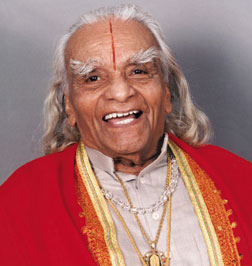What is Iyengar Yoga?
Yoga is steeped in thousands of years of history and tradition. Over time, the practice has evolved, new styles have been developed, and approaches to teaching have been modified to accommodate the changing needs of practitioners.
Iyengar Yoga has a focus on breath (pranayama) and posture (asana), and both are rooted in the eight limbs of yoga, which direct practitioners on how to live a life of meaning and purpose. This, however, may be where the similarities end.
Iyengar yoga is based in Hatha yoga, which generally refers to a gentle style of practice. The practice, created by B.K.S. Iyengar as a way to heal from tuberculosis, is often used as therapy.
Iyengar Yoga also focuses on alignment and teaches that there is a “right” way to do each posture. Practitioners are guided by the teacher to focus on the nuances of each asana until proper alignment is achieved. Realizing that every body is different, Iyengar introduced the use of props such as blankets, blocks, straps, and bolsters to help practitioners work through their challenges.
Proper Alignment for a Balanced Body and Mind
Iyengar believed that if a yogi practiced this style regularly, with attention given to proper alignment, they can achieve balance in the body — and when the body is balanced, so is the mind.
Iyengar is not a flowy style of yoga. Instead, with the intelligence of alignment in the poses, a student can also safely “link” poses together one after the other or even do surya namaska (salute to the sun), however some classes (restorative) students will be encouraged to rest in child’s pose between postures. But that doesn’t mean it’s “easy.” Each posture is held for extended periods while the student adjusts their body and corrects their alignment, which helps to build strength and stamina.
This style of yoga is considered ideal for anyone suffering from injury, for beginners, and even for the advanced practitioner who wants to improve their alignment & through the correct positioning in asana, relieve aches & pains & discomfort in the body. Iyengar Yoga is also intended to calm the mind, but while doing that, it also focuses on cleansing the internal body and keeping the organs doing their jobs. Through twists, folds, and bandhas or locks, circulation of the blood and lymph systems improve, making the body better at eliminating toxins.
If The Body is still, the Mind Will Follow.
Each asana is done on the breath, and when the practitioner gets into the pose they are encouraged to hold the pose with the attention directed on the breath & the asana, going into the movement safely, holding it with certain nuances mentioned to correct alignment in that particular posture & then come safely out of the pose, meanwhile the practitioner is encouraged to be aware of each point mentioned by the teacher so the mind is completely absorbed in the whole asana.
All Iyengar Yoga classes are taught by highly qualified & certified Iyengar Teachers.
The benefits of regular yoga practice are numerous:
- Immediate improvement in general health and fitness
- More energy and feeling of well being
- Stress management
- Increased strength, agility and flexibility
- Cardiovascular fitness
- Effective technique for relaxation
- Compliments almost all other therapies
- A balance between mind, body and soul
- Effective technique for relaxation
If you are new to Yoga or Iyengar Yoga and want to look at a Beginners Course or Class – check out our upcoming Introductory course


